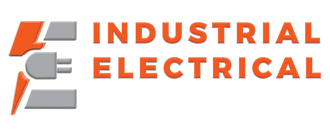Insulated tools are vital when working on electrical systems, protecting you from electric shock, burns, and other serious hazards. Each year, thousands of accidents and injuries occur due to improper handling of electrical equipment, highlighting the importance of proper insulation. In this guide, we’ll explore these specialized tools in detail—covering how they work, their benefits, and why they should be a staple in every electrician’s toolbox.
Understanding Insulated Tools:
When working with electricity, safety must always be your top priority. Insulated hand tools are specifically designed with robust, non-conductive materials to protect you from dangerous electric shocks and arc flashes, which can lead to severe injuries or even death. By investing in equipment, you ensure a safer work environment for yourself and those around you.
Below are some common non-conductive tools and their typical uses:
- Lineman’s Pliers – Ideal for cutting, bending, and gripping wires.
- Diagonal Cutters – Perfect for slicing through wires with precision.
- Needle-Nose Pliers – Excellent for bending, repositioning, and snipping wires in tight spaces.
- Tongue-and-Groove Pliers – Feature a slip-joint design for gripping larger objects securely.
- Wire Strippers – Essential for removing insulation from electrical wires without damaging the conductor.
- Slotted and Phillips Screwdrivers – Necessary for driving or removing screws in various electrical projects.
Remember that insulated tools are not just standard tools with rubber handles or a generic coating. They undergo rigorous testing to protect against up to 1000 V AC and 1500 V DC, giving you the confidence to work on any electrical equipment without compromising your safety.
How Insulated Tools Work:
Insulated tools feature non-conductive materials, from tip to handle, protecting against up to 1000 V AC per ASTM standards. Their dielectric insulation prevents electricity from passing through. Moreover, manufacturers carefully select materials—like porcelain, mica, Teflon, rubber, PVC, and glass—to ensure a safe barrier between users and live charges.
Choosing the Right Insulated Tools:
When considering buying insulated tools, there are several important factors to keep in mind:
- Opt for a reliable tool manufacturer: Ensure your insulated tools meet the required safety standards by selecting a well-known and trusted brand.
- Prioritize a secure grip: Look for designs that offer a non-slip handle, reducing the risk of accidents while working with electrical components.
- Compare warranties: Review and compare warranty coverage and procedures before making a decision, so you know exactly what protection you’re getting.
- Understand the insulation process: These type of tools undergo complex, time-intensive manufacturing to guard against electrical shock, they often cost more than standard tools.
- Certification standards: To be officially labeled as insulated tools, products must pass rigorous third-party testing, proving they remain effective under harsh conditions—including heavy use, extreme temperatures, and even direct flame.
Proper Care and Maintenance of Insulated Tools:
Taking proper care of your these tools can help prolong their lifespan and ensure they work safely and effectively. Here are some tips to keep in mind:
- Avoid exposing your insulated tools to moisture.
- Steer clear of solvents and cleaners that could damage the insulating layers.
- Store your insulated tools properly.
- Inspect your tools before each use.
- Keep your insulated tools clean, dry, and free from contaminants.
To avoid common mistakes, make sure to:
- Never touch any un-insulated part of the tool.
- Keep insulated equipments away from sharp objects like utility knives.
- Regularly clean and maintain your insulated tools.
- Don't use a tool with cracked, cut, perforated, or damaged insulation.

Conclusion:
Working with electricity demands unwavering attention to safety. To minimize the risk of electric shock and burns, it is essential to rely on insulated hand tools, which prevent current from traveling to the user and help maintain efficient operation of electrical systems. By establishing a solid foundation of safety practices, you safeguard both your well-being and your equipment.
When selecting these tools, look for products made by reputable manufacturers that comply with strict industry standards, ensuring reliable performance under challenging conditions. Furthermore, prioritize ergonomic designs that offer a secure, non-slip grip to reduce the likelihood of on-the-job accidents. Proper maintenance and storage—such as cleaning tools regularly and inspecting for wear or damage—will significantly extend their lifespan.
Ultimately, consistently using non-conductive tools fosters a safer work environment by lowering the odds of electrical-related incidents. In addition, cultivating a culture of safety and compliance within your team helps prevent costly downtime and increases overall productivity. By committing to high-quality tools and diligent safety measures, you can confidently tackle electrical tasks while protecting everyone involved.

